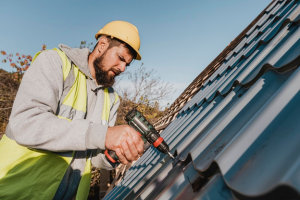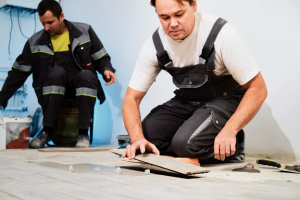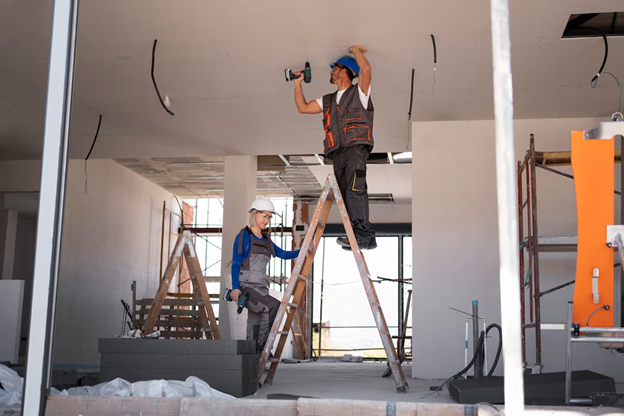Energy efficiency is a leading priority in contemporary home construction. Not only do homeowners value saving money on utility bills in the face of rising inflation, but they want to feel like they are doing their part to reduce their carbon footprint.
The good news is that there are many exciting building products that can give homeowners a major leg up in these efforts. Keep reading as we explore some of the most high-performance materials for creating a more energy-efficient home.
Low-E Windows

Increased window area is a crucial component of energy-efficient homes. More sunlight flowing into houses reduces the need for artificial lighting sources. In addition, modern windows that use robust aluminum or steel frames help fortify weak window-to-wall transitions for a more airtight building envelope.
To take the energy efficiency of your windows to the next level, consider innovative low-E glass or glazing. Low-E technology ensures that light is readily transmitted into the home while blocking thermal rays. This guarantees that the home is well-lit throughout the day without any unnecessary warming that would cause an increase in A/C usage.
Metal Roofing

The roof is the home’s first line of defense against the elements. It gets put to the test from extended UV exposure, projectile impact, and precipitation runoff. Any weakness in the roofing infrastructure will cause leaks through which air will readily transfer.
As a result, it is important to contact a professional roofing company to have the roof inspected each year. If there are any blistered, raised, or otherwise damaged shingles, they should be attended to immediately. If the degradation is widespread, consider a complete roof replacement.
Metal roofing is trending in family homes, thanks to its elite durability. It holds up in the face of extreme weather in ways that basic asphalt shingles and wood shakes cannot match. Precipitation readily flows off of metal roofing, guaranteeing no absorption that could potentially damage key substrate support. In addition, metal is a highly reflective material. This keeps it from absorbing warming UV rays during the height of summer, reducing the need for A/C compared to materials that store and release heat after the sun has gone down.
ICF Framing
Traditional wood-panel framing has several drawbacks in terms of energy efficiency:
- Requires significant energy to transport structural panels to the jobsite
- Necessitates cranes and other energy-consuming equipment during construction
- Often has small imperfections that allow air to pass
- Moisture-absorbing which can lead to mold, rot, and mildew
- Low resistance to fire and pest damage
As such, modern homes in areas known to experience severe weather are increasingly turning to insulated concrete forms (ICF) as a more energy-efficient framing solution for energy efficient buildings. Using a series of insulated blocks that are locked in place at the site, these precast forms are then set with concrete. The result is a solid, one-piece framing system that offers elite airtightness, fire, and pest protection. With an R-value exceeding 23, it is nearly 10 points higher than structural wood panels to provide the most insulative framing on the market.
Electric Floor Heating

According to the Department of Energy, a whopping 43% of the average home’s utility bill goes toward heating and cooling. This makes it by far the most expensive line item. Unfortunately, the typical forced-air HVAC systems used in most homes are woefully inefficient. It takes a significant amount of blowing air to heat or cool the home by a single degree.
With this in mind, it is worthwhile to consider installing an electric radiant floor heating system. This innovative approach uses a series of subfloor mats to disperse heat up through the flooring surface in a stovelike manner. This direct approach to heating helps eliminate cold pockets in the home. Controlled via a smart app, it provides a consistent heating experience that greatly reduces reliance on central HVAC.
Sound Mitigating Panels
The open floor plan is a trending concept in energy-efficient homes. It offers a number of sustainability benefits, including:
- Improved natural daylighting for reduced reliance on artificial lighting
- Fewer obstructions for more energy-efficient renovation and interior design
- More efficient circulation of conditioned air
With that said, one potential drawback of open interiors is the potential for unwanted noise transfer. To help in this regard, explore the benefits of artistic and/or acoustical wood panels to add soundproofing mass to the home’s walls. The best soundproofing panels can provide as much as a .95 NRC with as little as 15% wall coverage, making them an extremely low-profile means of creating a tranquil open interior.
Choose Top-Flight Materials for an Energy-Efficient Home
Energy-efficient materials can help homeowners save on utility bills while reducing their environmental impact. From low-E window glazing to electric radiant heating, consider any of the innovative options listed above for a more energy-efficient property. If you are in the upstate New York area and looking for a certified contractor to assist in your energy-efficiency efforts, visit Find the Home Pros today for the leading providers in the market!

Recent Comments